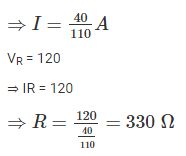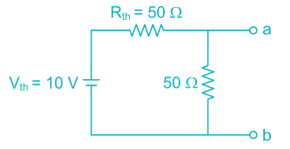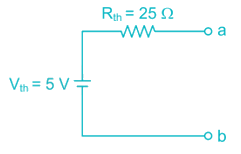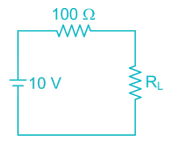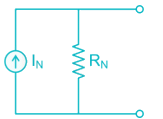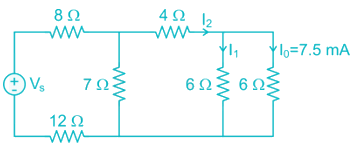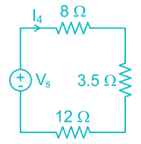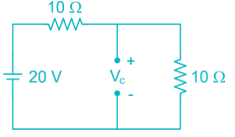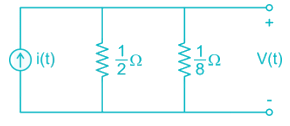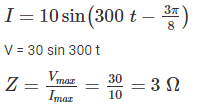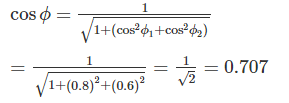Test: Electrical Circuits- 3 - Electrical Engineering (EE) MCQ
20 Questions MCQ Test - Test: Electrical Circuits- 3
If the length of a wire having uniform resistance R is stretched in m times with volume remaining same. What will be new resistance value?
A filament lamp of 40 W, 110 V is connected in series with resistance R. if the supply voltage is 230 V, the value of resistance R should be:
The temperature coefficient of resistance of material is given as:
Find the average current flow in the wire.
Given: type of wire: metallic
Total electrons drift across section per second = 1020
Three equal resistors of 50 Ω each are connected in parallel across 110 V dc supply. What is the current through each branch if one of the resistors gets shorted?
For a network Thevenin equivalent is given by Vth = 10 V and Rth = 50 Ω. If this network is shunted by another 50 Ω ……… at load. What is the new Thevenin equivalent of the network?
A circuit consists of three elements connected in series; 10 V battery, 100 Ω and load resistor RL. The maximum power that can be delivered to load would be?
Which of the following statements is/are correct about Norton Theorem?
A) The value of the current source is the short circuit current between the two terminals of the network.
B) Resistance is the equivalent resistance measured between the terminals of the network with all the energy. Sources are replaced by their internal resistance.
A current source and a voltage source are connected in parallel with a resistor as shown below. Suppose that vs = 15 V, is = 5A and R = 5 Ω. What is the current i in the resistor and the power absorbed by the resistor?

For the network shown in the following figure the value of Vs which makes I0 = 7.5 mA is:

Which statement about electrical network and electrical circuit is CORRECT?
In the figure given below, the initial capacitor voltage is zero. Then after switch is closes at t = 0, Calculate the final steady state voltage across the circuit:

Consider the following given figure and calculate steady-state value of v(t) if i(t) is a unit step current.
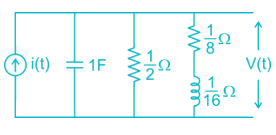
An ac voltage has frequency of 50 Hz with peak amplitude of 100 V. In how many seconds after the zero value, voltage will attain the value of 86.6 V?
In an RL series circuit, the current flowing is 5 A, the voltage drop across R is 16 V and the voltage drop across L is 12 V. Then what is the impedance?
Express the voltage shown below in the general form v(t) = Vm sin (ωt + θ).
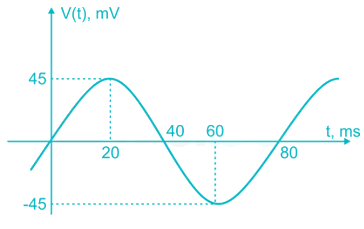
A current  is produced when a voltage V = 30 sin 300 t is applied to a circuit. The estimated value of impedance is:
is produced when a voltage V = 30 sin 300 t is applied to a circuit. The estimated value of impedance is:
Two circuits having the same magnitudes of impedances are joined in parallel. The power factor of one circuit is 0.8 and of other is 0.6. The power factor of the combination is -
For parallel RLC circuit, which of the following statements is not correct?




